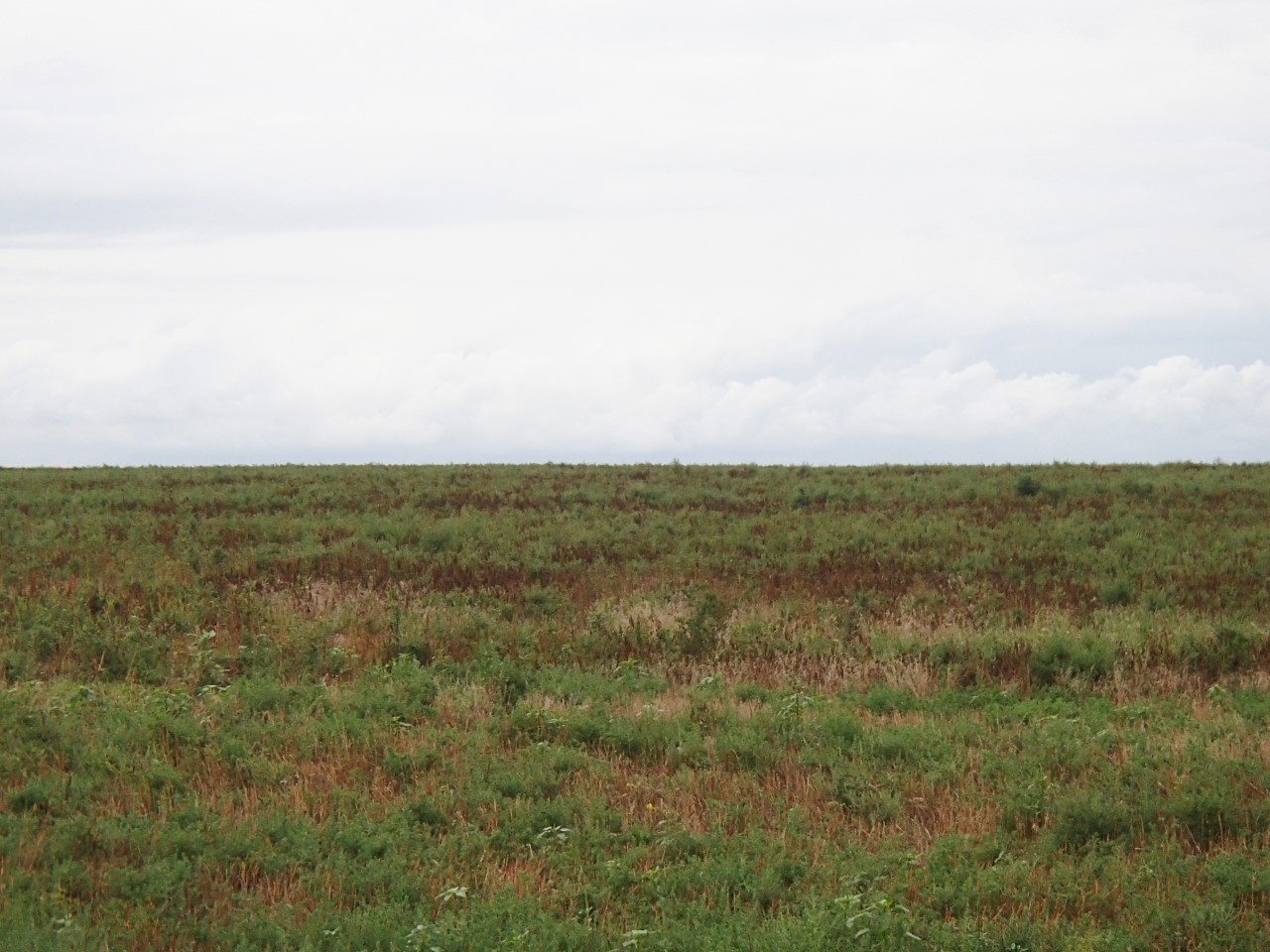Getting kochia under control in any cropping system that includes wheat requires control in the wheat crop during the spring and shortly after wheat harvest. This is not always easy, even if early spring herbicide applications for kochia control were made.

Figure 1. Kochia in wheat stubble. Photo by Dallas Peterson, retired K-State Research and Extension.
Late-emerging kochia in wheat
While most kochia emerges early in the spring, emergence can extend over weeks or months. A herbicide applied early in the spring will need to have residual activity to be effective on later-emerging kochia. Group 2 herbicides that contain chlorsulfuron (Glean, others) or metsulfuron (Ally, others) have residual activity on kochia but are ineffective on ALS-resistant kochia. Most kochia populations in Kansas are now ALS-resistant. ALS-resistant weeds are covered in more detail in a companion article in this eUpdate issue.
Similarly, some kochia populations are resistant to Group 4 herbicides, specifically dicamba and fluroxypyr (Starane, others). If sensitive populations are targeted for control, dicamba must be applied before the jointing stage of wheat and fluroxypyr can be applied through flag leaf emergence. Also, with susceptible populations to Group 4 herbicides, Starane NXT (fluroxypyr + bromoxynil) can be a good option as it provided an effective control of glyphosate-resistant kochia across states of the Great Plains. Pixxaro (halauxifen + fluroxypyr) is a combination of two Group 4 herbicides and can be applied up to flag leaf emergence. No kochia populations resistant to halauxifen (Elevore) have been reported in Kansas; however, halauxifen is generally less effective on kochia than fluroxypyr.
Huskie is a combination of a Group 27 herbicide (pyrasfulotole) with a Group 6 herbicide (bromoxynil). It is effective on emerged kochia and can be applied up to flag leaf emergence in wheat. Talinor (bicyclopyrone + bromoxynil) is a similar product that can be used to control kochia. Both of these products should be applied with adjuvants as directed on the labels.
If kochia needs to be controlled later in the season, a few herbicide options are available as harvest aids. Ally (metsulfuron) and glyphosate are labeled, but kochia will likely be resistant to these herbicides. If populations are not resistant, dicamba may be applied after wheat has lost green at the nodes but at least 7 days before harvest. In addition, seed wheat must have a germination test before it can be used. Sharpen (saflufenacil) and Valor (flumioxazin) are PPO-inhibiting (Group 14) herbicides that can be applied after the grain reaches 30% moisture. At least 3 days must pass before harvest after a Sharpen application, and at least 10 days are required after Valor is applied. Be sure to check herbicide labels for adjuvants and application timings for any products you may consider using as a harvest aid. More information about herbicides labeled for harvest aids in wheat can be found in this eUpdate article from late June 2023: https://eupdate.agronomy.ksu.edu/article_new/update-pre-harvest-weed-control-in-wheat-551-2
Kochia control in wheat stubble after harvest
If kochia has not been completely controlled in the wheat crop, it may be present when wheat is harvested. In most cases, the kochia plants will get “topped” by the combine as the wheat is harvested. If kochia has been topped, producers should wait until some regrowth has occurred before applying herbicides to the wheat stubble to control it.
A combination of glyphosate plus either dicamba or fluroxypyr may be the most effective treatment to control kochia in wheat stubble. Even if kochia populations are resistant to glyphosate, the tank-mix combinations with dicamba or fluroxypyr will probably provide good control, as long as the kochia aren’t too big, too stressed, or resistant to dicamba and/or fluroxypyr. Some 2,4-D can be added to the mixture to help control other broadleaf weeds, although 2,4-D generally will not help much in controlling kochia. Dicamba or fluroxypyr tanked mixed with a pound of atrazine and 2 oz of saflufenacil (Sharpen) have provided excellent kochia control following harvest. However, only corn or sorghum may be planted the following spring if atrazine is used.
Paraquat (Gramoxone, others) can also be used to control kochia after wheat harvest. Paraquat activity will be increased if applied with a Group 5 herbicide like atrazine. Metribuzin (Dimetric, others) can be used instead of atrazine if soybeans will be planted the following spring. Wheat can be planted 4 months after a metribuzin application. Paraquat is a contact herbicide that requires thorough coverage, which can be achieved by selecting nozzles to apply medium- to coarse-sized droplets and using spray volumes of 15 to 20 gallons per acre.
To improve kochia control after wheat harvest, apply the postharvest treatments in the morning hours or after the field has received some moisture, not when the kochia plants are under maximum stress. If kochia has been severely drought-stressed before treatment, waiting a couple of days following a good rain may increase control.
For more detailed information, see the “2024 Chemical Weed Control for Field Crops, Pastures, Rangeland, and Noncropland” guide available online at https://bookstore.ksre.ksu.edu/pubs/SRP1183.pdf or check with your local K-State Research and Extension office for a paper copy.
The use of trade names is for clarity to readers and does not imply endorsement of a particular product, nor does exclusion imply non-approval. Always consult the herbicide label for the most current use requirements. Users should read and follow all label instructions.
Sarah Lancaster, Extension Weed Science Specialist
slancaster@ksu.edu
Jeremie Kouame, Weed Scientist – Agricultural Experiment Center, Hays
jkouame@ksu.edu
Tags: wheat kochia herbicide resistance